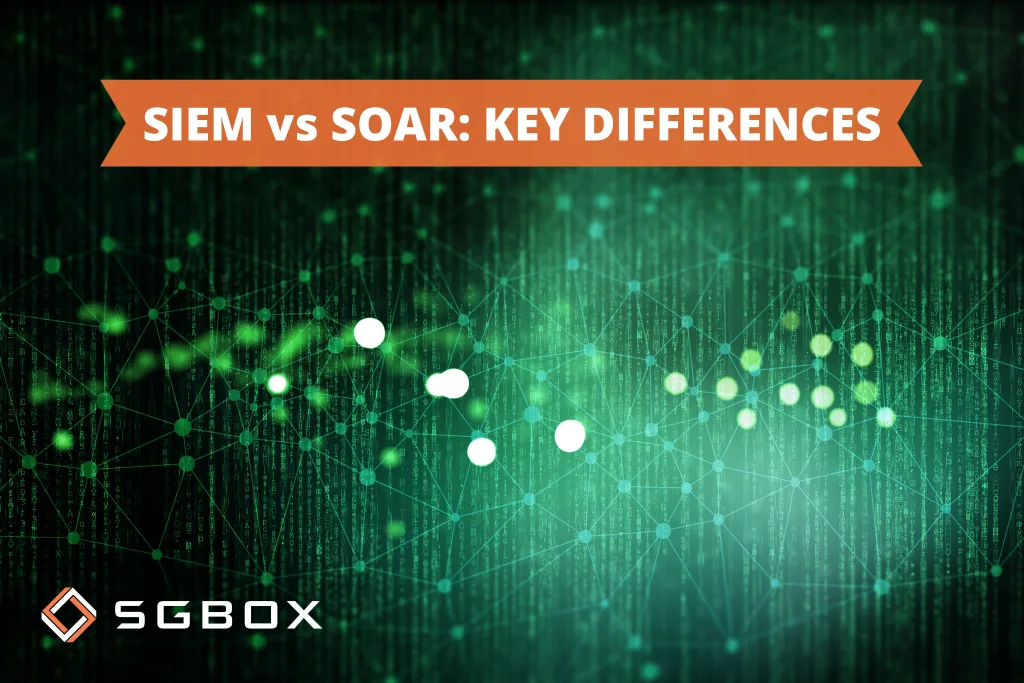SIEM vs SOAR: key differences

SOAR (Security Orchestration, Automation, and Response) and SIEM (Security Information and Event Management) are two distinct security technologies that vary in several aspects.
SIEM represents a technological approach to managing cyber security, focusing on the collection, analysis, and identification of anomalous events and potential threats.
It analyzes data flow and processing in real-time, alerting security personnel when abnormal situations are detected.
On the other hand, SOAR comprises a set of tools or services automating cyberattack prevention and response.
It emphasizes orchestration, automation, and incident response, utilizing playbooks or collections of workflows that execute automatically upon activation by a threat or incident.
Main differences between SIEM and SOAR
- Focus: SIEM concentrates on gathering and analyzing security data to identify anomalies, while SOAR centers on automating incident response.
- Purpose: SIEM is used for monitoring and analyzing security data to detect potential threats, whereas SOAR automates incident response to help reduce manual workload.
- Integration: SIEM provides an overarching view of the security environment, making threat management and understanding easier, whereas SOAR integrates with other security solutions like SIEM, firewalls, intrusion detection/prevention systems (IDS/IPS), and EDR to collect and analyze security data.
- Response: SIEM offers greater security environment visibility, while SOAR automates workflows and responses, with SOAR being the only solution supporting orchestration.
- Technology: SIEM employs behavioral analysis and other methods to detect threats, whereas SOAR uses automation algorithms to determine the most appropriate response and execute it autonomously.
- Scope: SIEM is essential for endpoint protection, while SOAR optimizes incident response through automation.
- Response Time: SOAR enables the creation of detailed reports and visualizations to help system administrators understand incidents and respond more quickly.
- Scalability: SOAR is more scalable than SIEM, capable of handling a larger number of devices and integrating with a variety of security solutions.
- Costs: SOAR may be more expensive than SIEM because it requires more resources for management and configuration.
- Development: SOAR is a newer technology compared to SIEM, hence continually evolving.
In summary, SIEM is used for monitoring and analyzing security data to detect potential threats, while SOAR is used to automate incident response and help reduce manual workload.
SGBox Next Generation SIEM & SOAR Platform
The SGBox Next Generation SIEM & SOAR platform synergistically integrates these two functionalities to provide comprehensive protection against cyber threats.
The combination of in-depth security information analysis and automatic incident response is the key element that enables SGBox to elevate corporate security posture and offer the right tools to effectively tackle daily security challenges.




